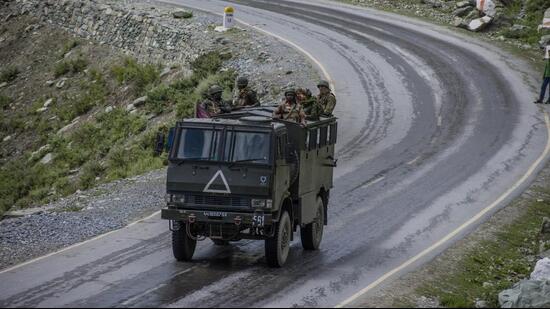Four years on, resolution to LAC standoff still elusive
The Indian Army and the Chinese People’s Liberation Army have held 21 rounds of corps commander-level of talks to cool tensions along the LAC
The military standoff between India and China in eastern Ladakh has entered its fifth year, with no indication of a resolution to the outstanding problems along the contested Line of Actual Control (LAC) although India is hoping ongoing negotiations will result in restoring the status quo ante of April 2020, officials aware of the matter said on Monday.

The Indian Army and the Chinese People’s Liberation Army have held 21 rounds of corps commander-level of talks to cool tensions along the LAC, but the two sides still have tens of thousands of troops each and advanced weaponry deployed in Ladakh.
Diplomatic talks are also underway to find a solution. Talks are the only way out to reach a lasting solution and ensure peace along the border, the officials said, asking not to be named.
The talks have thus far resulted in four rounds of disengagement from Galwan Valley, Pangong Tso, Gogra (PP-17A) and Hot Springs (PP-15), but problems at Depsang and Demchok are still on the negotiating table.
Although the current focus is on the unresolved issues at Depsang and Demchok, the 2020 PLA actions have had a much larger impact that has altered the nature of LAC management, said military affairs expert Lieutenant General DS Hooda (retd).
“Today, there is a lack of trust, deep suspicions and greater aggression on the LAC due to the complete disregard of CBMs (confidence-building measures) by the Chinese side,” Hooda said. “Both sides have built up considerable troop strength and are improving infrastructure. Even if some agreement is arrived at Depsang and Demchok, tensions are likely to persist. This is the new reality.”
In April, defence minister Rajnath Singh said ongoing negotiations with China will continue for the peaceful resolution of outstanding issues, even as Indian troops stand firm along the country’s northern borders. “Disengagement and de-escalation are the way forward,” he said while addressing the country’s top generals at the biannual army commanders’ conference on April 2.
After the standoff with China began in May 2020, India has built multiple roads, bridges, tunnels, airfields and helipads in its border areas for military mobility and logistics support for deployed forces, and for civilian use. Infrastructure development has also focussed on providing better living experience and improved facilities to soldiers, and conservation of modern weapons and equipment deployed in forward areas.
China also has built new airbases, missile sites, roads, bridges, reinforced bunkers and underground facilities to protect military assets from aerial strikes, accommodation for soldiers and ammunition depots.
Meanwhile, the opposition Congress party on Monday raised questions about the dragging standoff, saying despite 21 rounds of military talks during the past four years, the situation remains unfavourable.
“Today is the fourth anniversary of the clashes that began between Indian and Chinese troops at Pangong Tso in eastern Ladakh. These culminated in the fatal engagement in Galwan on 15 June 2020 in which 20 of our brave soldiers made the supreme sacrifice,” Congress MP Jairam Ramesh said in a statement. “The PM’s clean chit to China four days later – when he said, ‘Na koi hamari seema mein ghus aaya hai, na hi koi ghusa hua hai (nobody has entered our border)” – was a profound insult to our fallen soldiers and became the legitimisation of Chinese control over 2,000 sq km of land in eastern Ladakh.”
“Leh’s Superintendent of Police has clearly shown that our troops were unable to reach 26 out of 65 patrolling points that they could access prior to 5 May 2020,” the statement added.
Hitting back, BJP spokesperson Nalin Kohli said:“The Congress can first consider throwing some light as to why Rahul (Gandhi) ji preferred to secretly meet with the Chinese Ambassador? They can also share details of the alleged MoU between them and Communist Party of China.”






